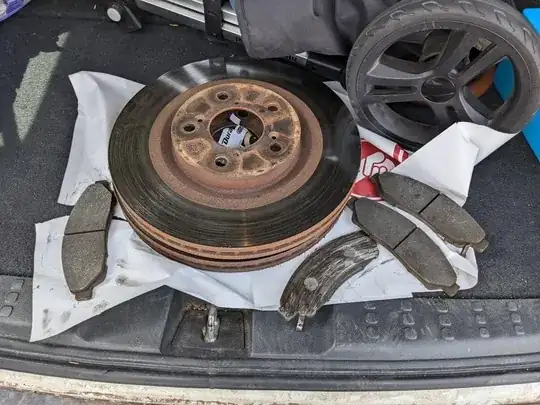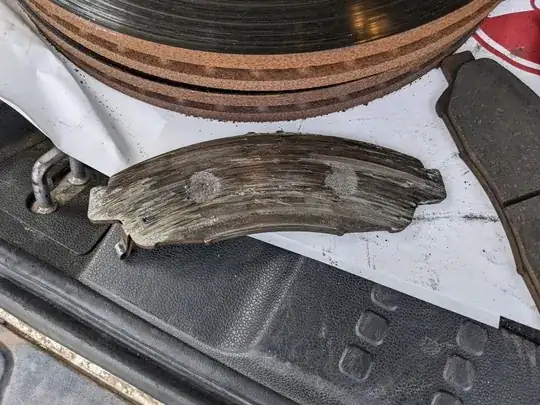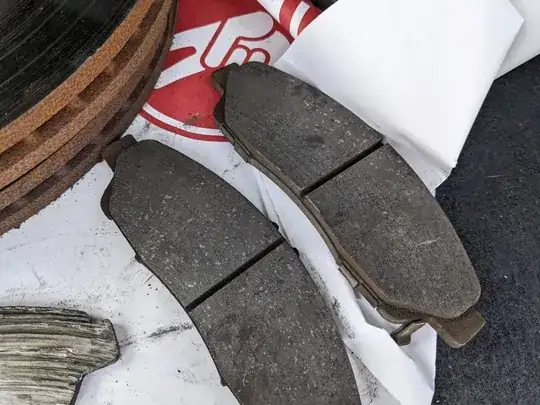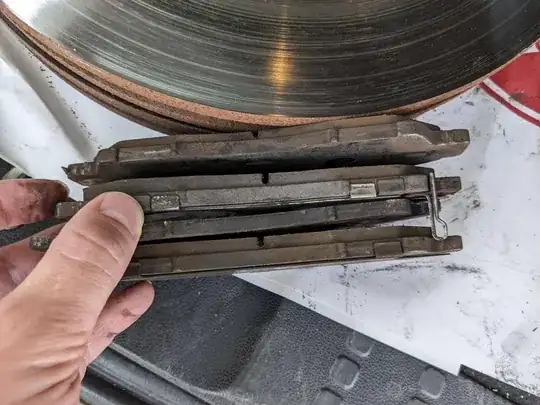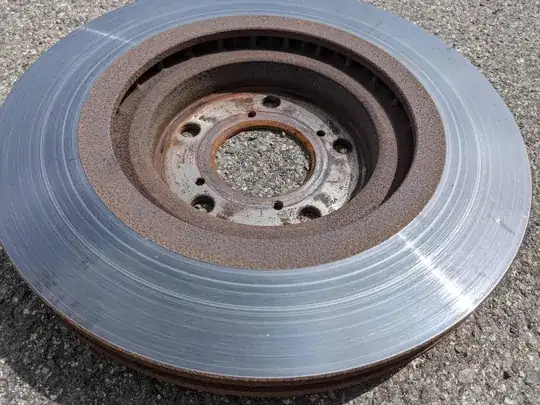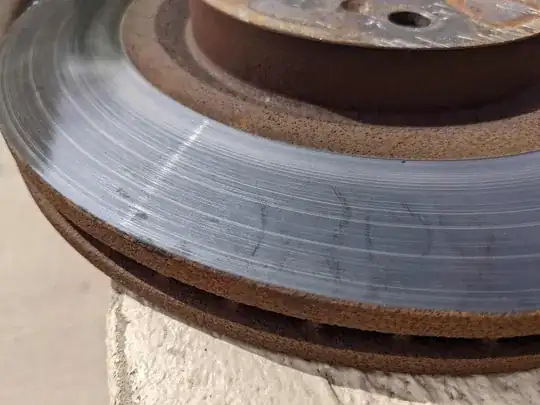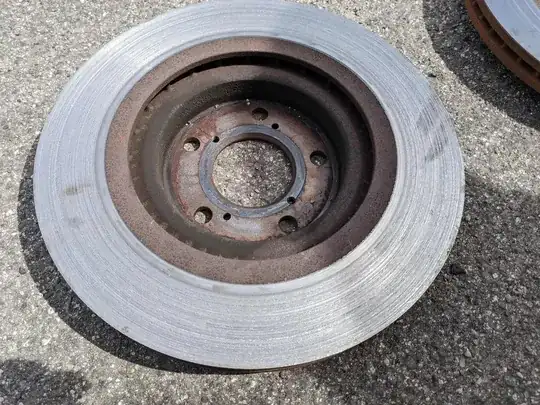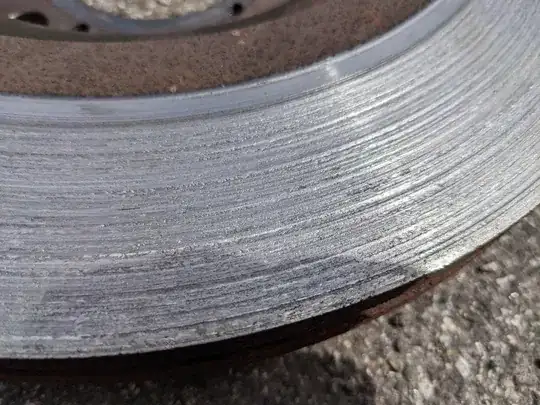They replaced all pads.
It's extremely unlikely that they would have failed to replace one pad. Due to the way pads are replaced, you have to undo a set of hooks, clips and pins to release the 2 pads, and then, they slide out together. It's no more work to do both than 1.
Especially if only the pads are being exchanged, and the rotors are not being turned.
Speaking of that.
Rotors should be resurfaced when replacing pads
When changing pads, it is very easy to inspect the outer rotor surface. But the inner surface is up against a splash guard, so it can't be visibly inspected without removing it. Removing the rotor is a minor chore because it involves removing the caliper - just a couple of bolts and hang it by a coat hanger so you don't have to disconnect the hydraulic line... but I could see a shop not wanting to bother.
So they may have missed hidden damage on that rotor.
As you can see from the other 3 surfaces, rotor surfaces do wear somewhat, and the rotor should be re-surfaced with every pad change. This is called "turning a rotor", and many garages and auto parts stores have a machine in the corner which does that job alone. When I get it done at the friendly neighborhood O'Reilly's, they charge me $15-25 per rotor.
A lot of garages won't bother turning rotors, because most replacement rotors cost about what turning does. But your rotors aren't. I can certainly see you balking at $200 to replace rotors!
My theory
I agree with others that this is likely the caliper failing to float freely left and right, causing excessive pressure on the one pad.
However if your pads hadn't been turned at your previous brake service, perhaps the rotors were not inspected on the inside. Perhaps that rotor had surface damage which caused it to chew up the pad prematurely. If the rotor had been turned, this defect would have been caught.
Anyway, while I agree with the "make sure the caliper can float freely" advice -- my additional advice here is to have rotors turned everytime you replace pads. Since your rotors are expensive, pick a garage that does turn rotors.
And have common sense: if your brake action suggests a warped rotor, turning won't necessarily fix that, and play it safe with a new rotor. And if the rust is bad and is starting to affect balance or the cooling passages, that too needs to go.
